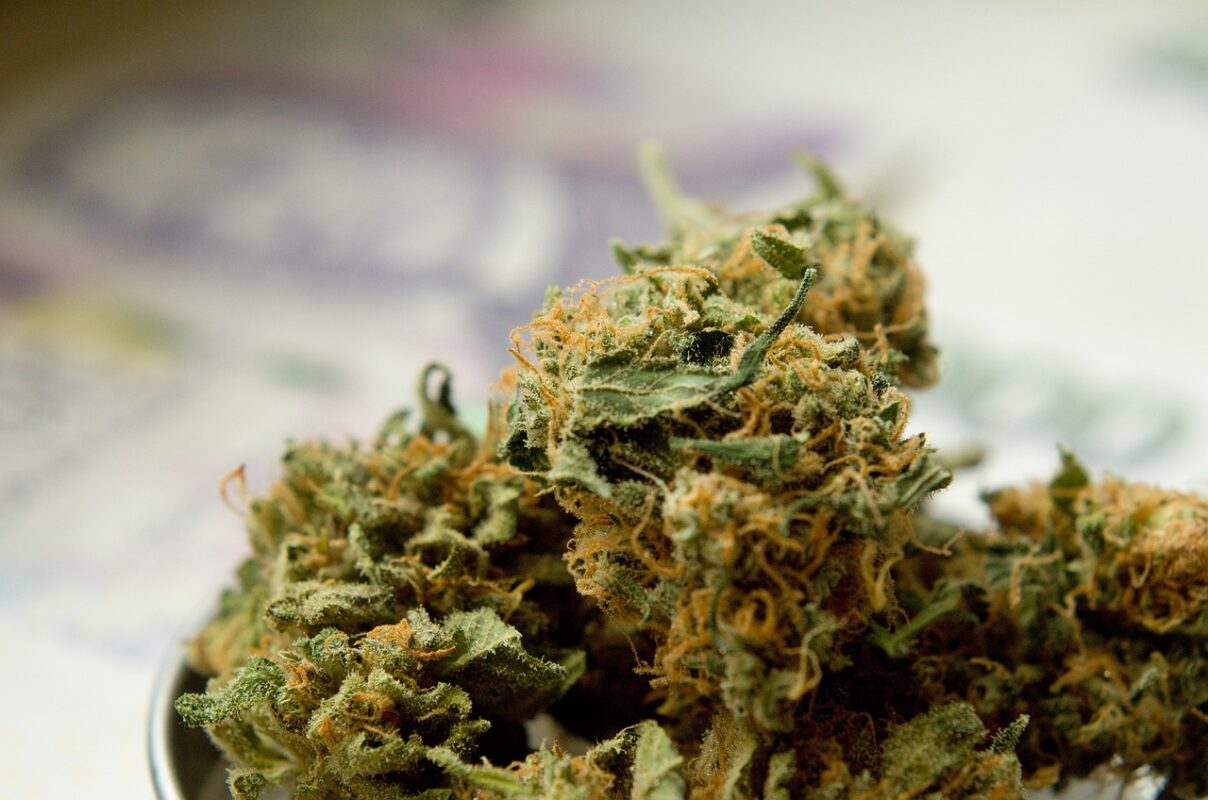Advanced Cancer Pain Reduced by 30% with THC in Sativa-Dominant Hybrid Strains
Pain is a prevalent issue, with 70% to 90% of advanced cancer experiencing significant discomfort. Opioids are the main medication for moderate to severe discomfort, but some do not achieve adequate relief despite dose adjustments and the use of standard adjunctive analgesics.
A study indicates that cannabis with a high THC-to-CBD ratio can reduce pain by 30%. Let’s explore how Sativa-dominant hybrid strains can assist cancer patients.
Contents
Key Takeaways:
- Doctors treat cancer discomfort using neurological surgical techniques and medical procedures to block pain signals.
- A study says tetrahydrocannabinol in Sativa-dominant buds reduces advanced cancer aches by 30%.
- Weed may offer an alternative or adjunct to opioid medications for discomfort management.
Cancer Pain Overview
Dull, achy, sharp, or burning and can range from constant to intermittent and mild to severe. The level you experience depends on several factors, including the type and stage, its location, and your tolerance.
Causes
Causes might grow into or destroy nearby tissues, press on nerves, bones, or organs, or release chemicals that trigger aches. While treating cancer can alleviate some of this ache, treatments such as surgery, radiation, and chemotherapy can also cause it.
How Does It Affect Patients?
Cancer can limit mobility, cause fatigue, disrupt daily life, and diminish overall well-being. Emotionally, it triggers anxiety, fear, and sometimes depression.
Socially, ache may lead to isolation as patients withdraw from activities and relationships, while financially, it adds to the burden of medical costs. Cognitively, ache can impair concentration and sleep, further complicating the ability to manage everyday tasks and treatment decisions.
Conventional Treatments
Several treatments are available; the best approach depends on the cause and intensity. You might need a combination of treatments to achieve the most relief.
- Over-the-Counter Analgesics: Non-prescription relievers can be effective for mild to moderate discomfort.
- Opioids: These prescription medications are for moderate to severe. Opioids can be short-acting or long-acting.
- Other Prescription Medications: Antidepressants, anti-seizure drugs, and steroids can have analgesic effects.
- Nerve Blocks: This procedure involves injecting a numbing medication around or into a nerve to block pain signals from reaching the brain.
Study Says THC-Dominant Weed Has Analgesic Effects
A study suggests that marijuana with a high THC percentage may provide more effective relief. Researchers employed a double-blind, placebo-controlled design to evaluate the analgesic effects of natural cannabis extracts.
2010 Study
The Shrewsbury study compared the effectiveness of a THC: CBD extract and a THC extract with a placebo in relieving discomfort in advanced cancer patients.
Methods
The study involved 177 patients with cancer pain recruited into a two-week, multicenter, double-blind, randomized, placebo-controlled, parallel-group trial. Secondary measures included opioid and breakthrough medication usage, sleep quality, nausea scores, pain control assessment, and quality of life.
Key Results
Twice as many subjects taking the THC: CBD extract experienced a reduction of more than 30% in their baseline NRS (Numerical Rating Scale) score compared to those receiving the placebo. The odds ratio for this result was statistically significant. In contrast, the THC extract did not show a statistically significant difference from the placebo, with similar responder rates.
There was no change in the median dose of opioid medication or the mean number of doses of breakthrough medication across all treatment groups. The groups had no significant differences in NRS sleep quality scores, nausea scores, or pain control assessments.
In chronic ache trials, it’s essential to document the percentage of patients who achieve at least a 30% reduction in intensity. This is why the researcher noted that the results found were statistically significant.
Back up Study
A San Diego double-blind, placebo-controlled, crossover trial on analgesic relief using smoked weed found that HIV patients with neuropathies reported similar results to those in the Shrewsbury study. The trial included placebo and active weed treatments with Delta-9-tetrahydrocannabinol concentrations ranging from 1% to 8%.
Administration occurred four times daily for five days during the two treatment weeks, separated by a 2-week washout period. Results showed that relief was more significant with cannabis than with placebo. The proportion of patients achieving 30% relief was 46% with cannabis compared to 18% with placebo.
Other Results and Reactions
Mood and daily functioning improved similarly during both treatment periods. Most adverse reactions were mild and self-limiting. Overall, smoked weed was well-tolerated and effective when used alongside other analgesic therapies in subjects with medically refractory discomfort from HIV-associated distal sensory predominant neuropathy (DSPN).
Tetrahydrocannabinol and Sativa-Dominant Hybrid Marijuana Strains
Sativa-dominant hybrids are buds with more Sativa genetics than Indica genetics. They tend to have a high tetrahydrocannabinol content (between 15 and 25%). They are known mood boosters, which is why they are prescribed to patients suffering from depression. They are for those who want a more cerebral, energizing high.
They enhance productivity and focus, which is why they are popular among smokers who have ADHD and other attention disorders. Some feel that smoking Sativa vs Indica cannabis strains gives them creative inspiration.
How Does it Help Reduce Aches?
Tetrahydrocannabinol interacts with cannabinoid receptors CB1 and CB2, key components of the endogenous cannabinoid system. While it binds more strongly to CB1 receptors, it has a weaker affinity for CB2 receptors.
When tetrahydrocannabinol binds to CB1 receptors, it reduces movement, lowers body temperature, and has an analgesic impact. This influences the CNS’s sensory, somatic, and cognitive perception.
In addition to its action on CB1 receptors, it also affects CB2 and other receptors, which contributes to its neuroprotective, anti-spasmodic, and anti-inflammatory properties.
CBD, however, binds weakly to both CB1 and CB2 receptors and acts as a neutral antagonist. It also acts as an agonist at the TRPV1 vanilloid receptor and enhances anandamide levels by inhibiting its reuptake and breakdown. Both of these also play a role in discomfort regulation.
The cannabinoids studied in the double-blind, placebo-controlled human trial included THC and CBD. Cannabis Sativa has higher THC-to-CBD ratios, which makes them more effective for managing aches.
Comparing Sativa to Other Buds
Dominant Sativa strains have effects that differ from those of Indica-dominant hybrid strains, even though they may contain some Indica strain genetics. They also differ from balanced hybrid strains that combine both. Here is a brief overview of the three popular hybrid strains:
| Features | Sativa-Dominant | Indica Hybrid Strain | Balanced Hybrid Cannabis Strains |
| Effects | Energizing, uplifting, cerebral high | Calming, relaxing, sedative, body high | Mixed with calming, sedating, uplifting, and euphoric |
| Preferred Time of Use | Daytime | Evening, nighttime | Any time of the day |
| Dominant Cannabinoid | THC | CBD | Equal THC and CBD |
| Treatment | Depression | Insomnia | Anxiety |
Relieve Your Discomfort with These Products
Are you experiencing pain? Consider exploring various cannabis products to manage your condition and enhance your quality of life.
| Strain | Ratio (Sativa/Indica) Parent Strains | THC | CBD | Experience |
| Red Congo | 100% Sativa | 29% | 1% | Energy boost and perfect for fighting fatigue |
| Pink Runtz | 50/50 | 32% | 1% | A sense of calmness |
| Van Helsing | 40:60 | 30% | 1% | Euphoria, happiness, relaxation, and creativity |
| Cereal Milk | 50:50 | 28% | 1% | Mellow tranquility with energizing creativity |
| Lemon Cherry Gelato | 40:60 | 30% | 2% | Uplifting mood that transitions to a mellow state |
Reduce Your Body Aches With Marijuana
Cancer patients may find relief from their symptoms through smoking or vaping cannabis flower. This method can reduce discomfort intensity by up to 30%. While opioids can help manage aches, marijuana is generally less addictive and requires only a few puffs to achieve lasting effects. For high-quality and potent strains to address your aches, visit GetLoud Cannabis.
Frequently Asked Questions
How much or what dosage is suitable for managing body aches?
The appropriate dosage depends on your tolerance level. Some may start with higher doses and feel comfortable, while others might find this overwhelming. The method of consumption also affects the required dosage, as oral ingestion differs from smoking. It is best to start with a very low dose and gradually increase it if you do not achieve the desired effects.
Do Indica strains offer analgesic benefits?
Yes, but it’s not as potent as its counterpart. This strain is better for inducing relaxation, calmness, and sedation. It’s ideal for promoting sleep if you’re struggling with insomnia or for unwinding after a long day.
What is the best way to manage aches quickly?
You can smoke or vape weed flower to experience quicker effects, which start within a few minutes but last only a few hours. For longer-lasting effects, consider making edibles with your buds.


